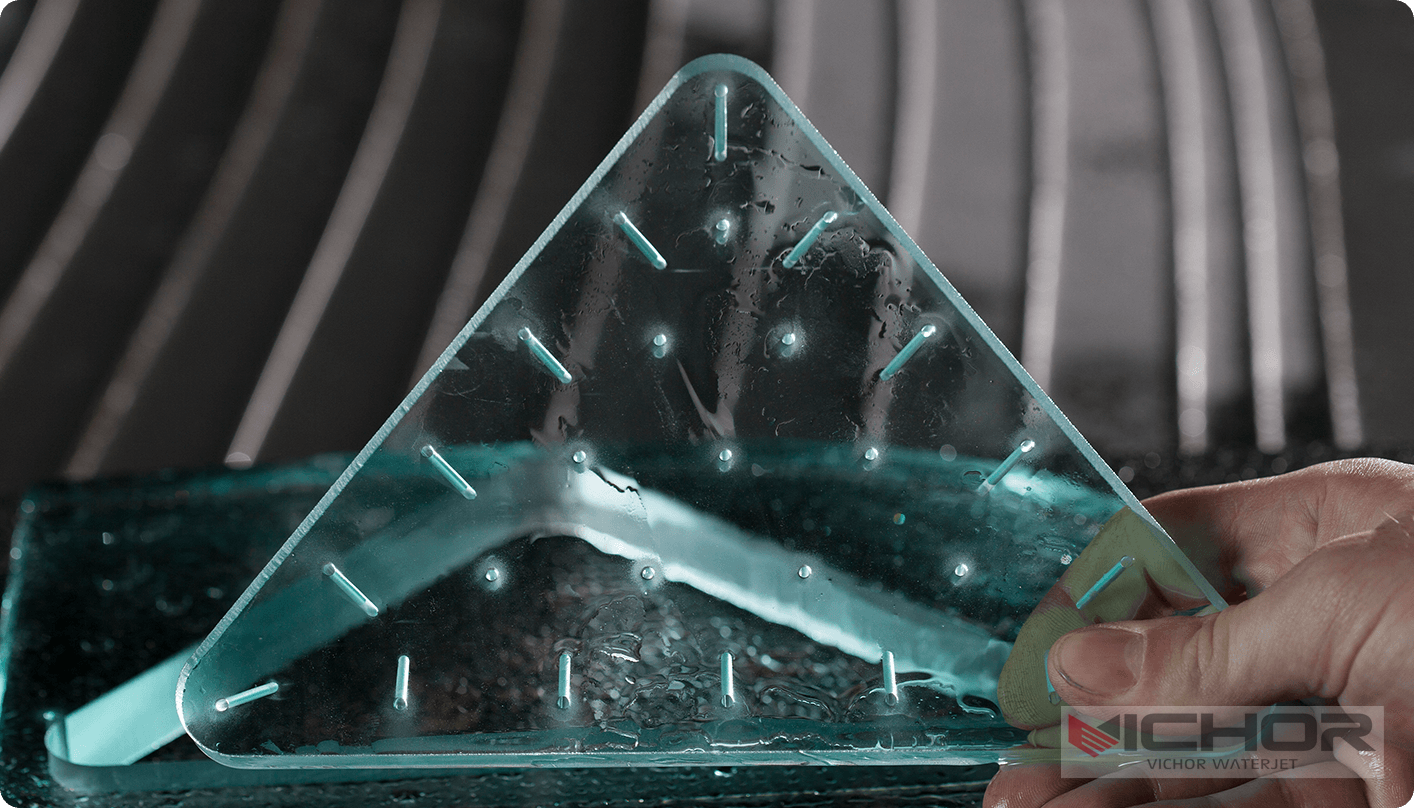
7 Key Things to Know About Water Jet Media for Optimal Cutting & Cleaning
Waterjet cutting is a marvel of modern manufacturing, using a supersonic stream of water to slice through materials with incredible precision. But pure water, as powerful as it is, has its limits. This is where water jet media comes into play. Also known as abrasive waterjet cutting, this process mixes a granular grit into the water stream, transforming it into a versatile tool capable of cutting virtually any material, from tempered glass to titanium.
Understanding the water jet media itself is critical to achieving the desired cut quality, efficiency, and cost-effectiveness. This article delves into seven essential aspects of water jet media, exploring its types, applications, selection criteria, and the common challenges operators face.
What Exactly is Water Jet Media?
Water jet media is the abrasive grit intentionally introduced into a high-pressure waterjet stream to enable it to cut hard materials. In a pure waterjet, the stream is effective for soft materials like rubber, foam, or food products. However, to cut metals, ceramics, stone, or composites, an abrasive must be added.
The process works through a principle called erosive cutting. The ultra-high-pressure water (reaching up to 90,000 psi) accelerates the hard, granular water jet media particles to extreme velocities. This abrasive-laden stream microscopically erodes the material along a very narrow path, resulting in a clean, precise, and typically heat-free cut. The type, size, and quality of this media are fundamental to the entire operation’s success.
The Different Types of Abrasive Media
Not all water jet media is created equal. The choice of abrasive depends heavily on the material being cut and the required finish. The most common types include:
Garnet: This is the industry standard and the most widely used water jet media. It is a natural, hard, sharp-edged mineral that offers an excellent balance of cutting performance and cost. Garnet is available in different grades (from 50/80 mesh to 200 mesh) and is suitable for cutting a vast array of materials, including steel, aluminum, stone, and glass.
Aluminum Oxide (AlOx): A synthetic abrasive that is harder and more aggressive than garnet. It is often used for cutting extremely hard or dense materials, such as titanium, tool steels, and certain ceramics. It tends to be more expensive and can cause faster wear on machine parts like the mixing tube and focus nozzle.
Olivine: Softer and less expensive than garnet, olivine is typically used for applications where a less aggressive cut is desired or for cleaning purposes where minimal substrate removal is the goal.
Silicon Carbide: This is one of the hardest synthetic abrasives available. It is reserved for cutting the toughest materials, such as advanced ceramics and carbides. However, its extreme hardness leads to very rapid consumable wear, making it a costly option used only when necessary.
Recycled Abrasives: Some systems allow for the recycling and reuse of abrasives. While this can significantly reduce operating costs, the recycled grit is typically less sharp and consistent than new media, which can affect cut quality and speed.
How to Choose the Right Water Jet Media
Selecting the optimal water jet media is a strategic decision that impacts your bottom line and product quality. Here are the key factors to consider:
Material to be Cut: This is the primary driver. Garnet is the universal choice for most metals and stone. For superalloys and advanced composites, aluminum oxide or silicon carbide might be needed.
Cut Quality Requirements: A finer mesh abrasive (e.g., 120 or 200 mesh) will produce a smoother surface finish but may cut more slowly. A coarser mesh (e.g., 80 mesh) cuts faster but leaves a rougher edge.
Cutting Speed: Generally, a larger, more aggressive abrasive can remove material faster. However, speed must be balanced against quality and consumable wear.
Operating Cost: This involves the cost of the abrasive itself and its impact on other consumables. A harder abrasive like aluminum oxide may cut faster but wear out the expensive mixing tubes much more quickly, potentially negating the savings on abrasive cost.
The Critical Role of Mesh Size
The “mesh size” of water jet media refers to the size of the individual abrasive particles. It is determined by sieving the abrasive through screens with specific-sized openings. The mesh number indicates the number of openings per linear inch in that screen.
A lower mesh number (e.g., 50/80) means larger particles. These cut more aggressively and are faster but produce a rougher surface finish.
A higher mesh number (e.g., 120, 200) means smaller, finer particles. These cut slower and provide a much smoother edge.
An 80-mesh garnet is the most common general-purpose size, offering a great blend of speed and finish for most materials.
Common Problems and Solutions with Water Jet Media
Even with the right equipment, operators can encounter issues often traced back to the abrasive. Here are some common problems:
Problem: Poor Cut Quality or Taper (V-Shape)
Cause: Using worn-out or inconsistent water jet media, incorrect mesh size, or a damp/clogged abrasive feed system.
Solution: Ensure you are using fresh, dry, and properly sized abrasive. Check the abrasive delivery system for moisture clogs and ensure a consistent flow.
Problem: Slow Cutting Speed
Cause: The abrasive may be too fine for the material, or the quality of the grit may be low (lacking sharpness).
Solution: Switch to a coarser, sharper, and higher-quality abrasive. Verify the abrasive feed rate is set correctly—too little abrasive drastically reduces cutting power.
Problem: Excessive Wear on Consumables (Mixing Tubes, Nozzles)
Cause: Using an abrasive that is too hard (like silicon carbide on mild steel) or an abrasive with a high percentage of oversized, irregular particles.
Solution: Match the abrasive hardness to the application. Use garnet for most standard jobs. Source your abrasive from a reputable supplier that guarantees consistent particle size and shape to avoid premature wear.
Problem: Abrasive Feed Issues (Clogging)
Cause: Moisture is the biggest enemy. It causes the abrasive to clump together and clog the feed lines, leading to an inconsistent stream and poor cuts.
Solution: Always store abrasive in a dry environment. Ensure the air supplying the abrasive hopper is dry and filtered. Use hoppers and feed systems designed to resist moisture absorption.
Problem: High Operating Costs
Cause: Inefficient use of abrasive, using an overly expensive abrasive for a simple job, or high consumable wear due to poor abrasive choice.
Solution: Optimize the abrasive flow rate settings on your machine. Don’t use aluminum oxide if garnet will do the job. Consider abrasive recycling systems for high-volume shops to reclaim unused grit.
Beyond Cutting: Other Applications for Abrasive Media
While cutting is its primary function, abrasive waterjet technology is also brilliantly applied in surface preparation and cleaning. Using a lower pressure and a specific water jet media, it can:
Remove Coatings: Strip paint, rust, and marine growth from ships, bridges, and industrial structures without damaging the underlying substrate.
Surface Texturing: Create precise surface profiles on metal for better paint or coating adhesion.
Peening: Use a fine abrasive to impart compressive stresses on a metal surface, increasing its fatigue life.
Storage and Handling Best Practices
To get the most out of your water jet media and avoid the common problems mentioned, proper handling is non-negotiable.
Keep it Dry: Store bags of abrasive in a sealed, climate-controlled environment off a concrete floor (which can transmit moisture). Use a dedicated hopper with a desiccant air dryer for the feed air.
First-In, First-Out (FIFO): Use older stock first to prevent it from sitting for too long and potentially absorbing ambient moisture.
Cleanliness: Keep the area around the abrasive hopper clean. Avoid introducing dirt, debris, or other contaminants that could clog the system.
In conclusion, water jet media is far from a simple commodity; it is the lifeblood of the abrasive waterjet cutting process. By understanding its types, characteristics, and the nuances of its application, operators can unlock full control over their cutting operations, achieving unparalleled quality, efficiency, and cost savings. Choosing the right grit and managing it wisely is the key to mastering this powerful technology.
continue reading



